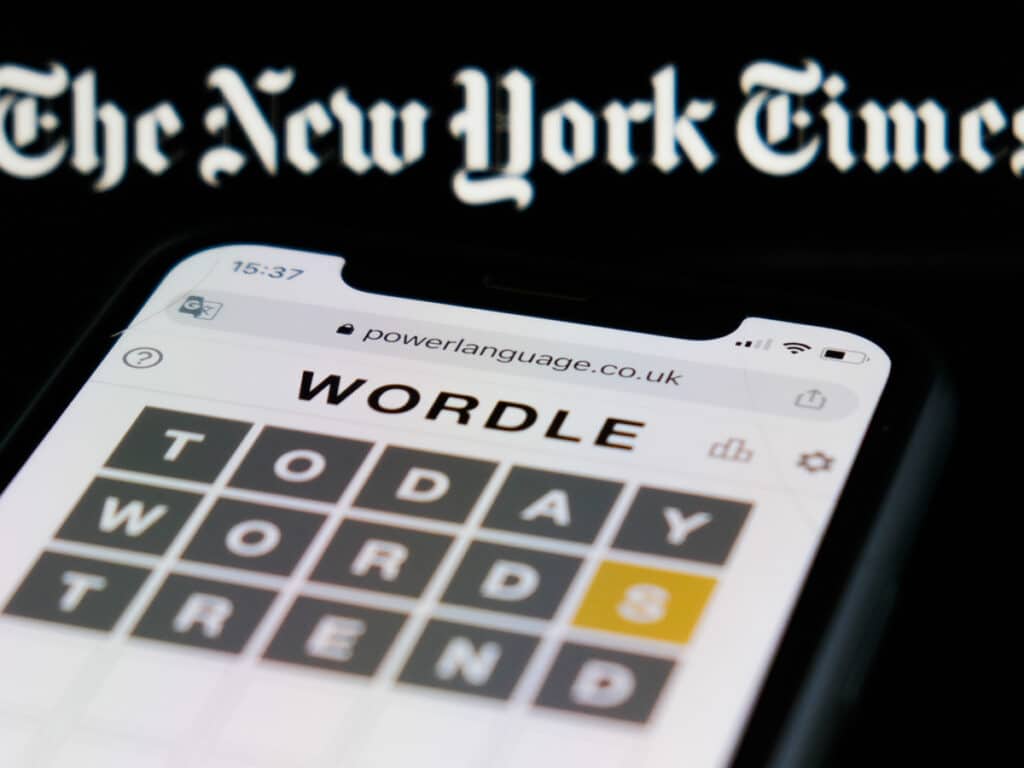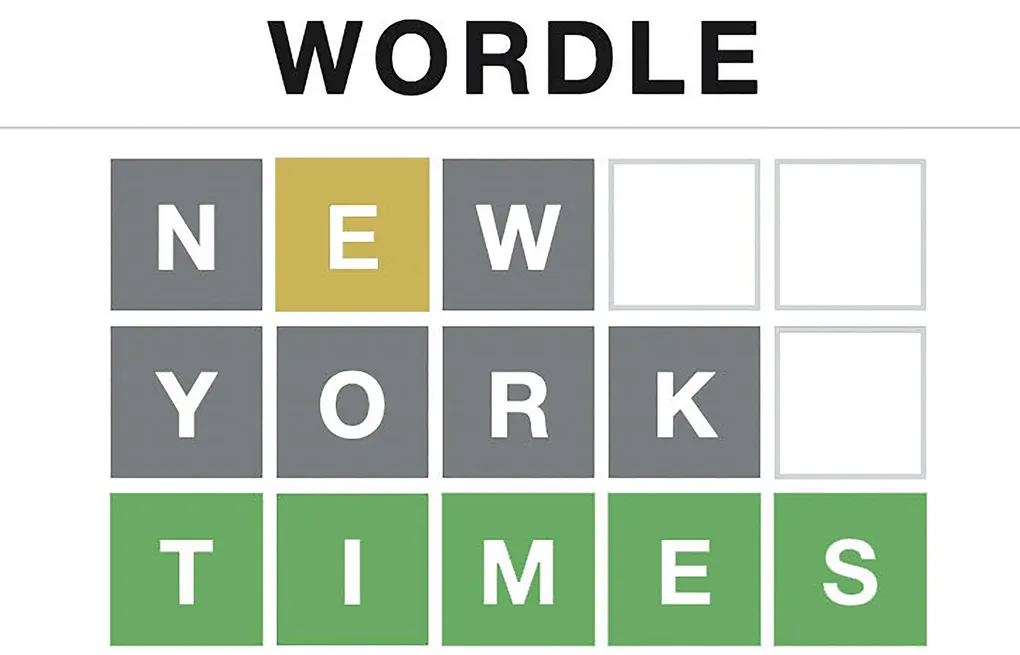In the realm of online word games, one name has recently taken the internet by storm: New York Times Wordle. Captivating word enthusiasts and puzzle lovers alike, this addictive game has quickly gained popularity and become a daily ritual for countless players seeking a mental challenge.
In this article, we embark on a journey to unravel the allure and appeal of New York Times Wordle, delving into its mechanics, strategies, and the addictive thrill of deciphering the secret five-letter word.

What makes New York Times Wordle so intriguing is its perfect blend of challenge and simplicity. Players must engage their cognitive abilities, carefully selecting words that fit the given criteria while adapting their strategy based on the feedback received.
With only six attempts to crack the code, the game keeps players on their toes, triggering a sense of anticipation and rewarding the triumphant moment of guessing the hidden word.
READ ALSO:
- Unblocked Games World: All You Need To Know
- Gaming Culture: All You Need To Know
- Roblox Unblocked 2023: The Ultimate Free Guide
About the New York Times Wordle
The New York Times Wordle is a popular online word-guessing game that challenges players to uncover a secret five-letter target word within a limited number of attempts. The game is designed to test players’ vocabulary, deductive reasoning, and problem-solving skills.
To play New York Times Wordle, you start with a target word, which is a five-letter word chosen by the game. Your objective is to guess the target word correctly using a process of elimination and the feedback provided by the game.
You make your guesses by entering five-letter words into the game interface. After each guess, the game provides feedback in the form of coloured squares. A green square indicates that a letter in your guess is present in the target word but in a different position, while a yellow square indicates that a letter in your guess is both present in the target word and in the correct position.

Based on this feedback, you need to analyze and adjust your strategy. Use the information from the coloured squares to narrow down the possibilities and make more educated guesses in subsequent attempts. The challenge lies in finding the correct letters and their correct positions within the target word using the fewest number of guesses possible.
You have a limited number of attempts to guess the target word. The exact number of attempts can vary depending on the specific version or variation of the game you are playing. Some versions may allow six attempts, while others may have different rules.
The game continues until you either guess the target word correctly or run out of attempts. Successful players aim to find the target word with the fewest number of guesses, ideally achieving the solution in the quickest time possible.
Wordle is often played online through dedicated websites or mobile applications, and it has gained popularity due to its engaging and addictive nature. It offers a fun and challenging experience for word enthusiasts, providing an opportunity to enhance vocabulary skills and exercise logical thinking.
Please note that the specific mechanics and rules of New York Times Wordle may vary depending on the version or platform you are using. It’s always recommended to refer to the instructions provided by the game developer or the official Wordle platform for accurate and up-to-date information.
READ ALSO:
How to Play the New York Times Wordle
- Start with a target word: The game presents you with a secret five-letter target word that you need to guess within six attempts.
- Guess a word: Enter a five-letter word as your guess. The letters can be in any order.
- Receive feedback: After each guess, you’ll receive feedback in the form of coloured squares. A green square indicates a correct letter in the target word but in the wrong position, while a yellow square indicates a correct letter in the correct position.
- Adjust your strategy: Use the feedback from the coloured squares to refine your guesses. Pay attention to the positions of the correct letters and work towards deducing the target word.
- Keep guessing: Repeat steps 2 to 4, adjusting your guesses based on the feedback until you successfully guess the target word or exhaust your six attempts.
- Aim for the fastest solution: While not required. Many players strive to find the target word using the fewest number of guesses and in the quickest time possible.
Remember that the specific mechanics and gameplay of online word games may vary, so it’s always recommended to refer to the specific instructions and guidelines the game developer provides.
SEE: 19+ Fun Games to Play When Bored
Other Games on Google
Google offers a wide range of games and interactive experiences through various platforms. Here are some popular games and activities you can find on Google:

- Google Doodles: With interactive doodles on its homepage, Google often celebrates significant events, anniversaries, and holidays. These doodles can include mini-games or interactive experiences that allow users to engage and have fun while learning about a specific topic or celebrating an occasion.
- Google Play Games: This is an online gaming service for Android devices. It offers a vast collection of games across different genres, including puzzle games, arcade games, strategy games, and more. Users can download and play games from the Google Play Store, connect with friends, track achievements, and compete on leaderboards.
- Google Stadia: Google Stadia is a cloud gaming service that allows users to stream and play high-quality video games on various devices, including computers, smartphones, and smart TVs. It offers a library of popular games that can be played instantly without the need for extensive downloads or hardware.
- Google Feud: Google Feud is an online game that challenges players to guess the top Google search suggestions based on a given prompt. Players need to anticipate the most popular queries associated with a particular topic, testing their knowledge and intuition.
- Chrome Experiments: Chrome Experiment is a platform that showcases creative and interactive web-based projects, including games, art, music, and more. It features a variety of experimental and innovative games that push the boundaries of web technologies and provide unique gameplay experiences.
- Google Earth Games: Google Earth offers various educational and interactive games that allow users to explore the world, learn about different locations, and engage in challenges related to geography, history, and culture.
These are just a few examples of the games and interactive experiences available on Google platforms. Google’s offerings continually evolve, so exploring the Google Play Store, Google Doodles, and other Google services is worth exploring to discover more games and activities that cater to your interests.
READ ALSO:
Online Google Games
Google offers a variety of online games that can be accessed and played directly through your web browser. These games are often simple and casual, providing quick entertainment and fun. Here are a few examples of online games offered by Google:
- Google Snake Game: Inspired by the classic Snake game, Google offers a version where you control a snake and aim to eat as many apples as possible without hitting the walls or yourself. You can search for “Google Snake Game” to find and play it.
- Google Solitaire: Google provides an online version of the classic card game Solitaire. You can enjoy a game of Solitaire directly in your web browser by searching for “Google Solitaire.”
- Google Pac-Man: Google has recreated the iconic arcade game Pac-Man, allowing you to play it in your browser. Just search for “Google Pac-Man” and start gobbling up those dots while avoiding the ghosts.
- Google Doodle Games: Google occasionally releases interactive doodles on its homepage, some of which include mini-games. These doodles are often based on various themes or events and offer a range of fun and engaging gameplay experiences.
To find more online games by Google, you can search for specific game titles or browse through the Google Doodles archive to discover previous interactive doodles. Additionally, you can explore the Chrome Web Store, which offers a wide selection of games and extensions for the Google Chrome browser.
While there may not be many games asides from “New York Times Wordle”, the concept of word-guessing games like New York Times Wordle has captivated players worldwide. The addictive charm of Wordle lies in its ability to challenge players’ linguistic skills, deductive reasoning, and strategic thinking.
SEE ALSO:
New York Times Wordle provides a delightful and engaging experience, pushing players to carefully select words and decipher the secret target word within a limited number of attempts.
The thrill of receiving feedback through coloured squares and adjusting strategies adds to the game’s appeal, keeping players immersed in a quest for word mastery.
Whether it’s the pursuit of finding the target word using the fewest guesses or the communal experience of sharing strategies and celebrating victories, New York Times Wordle has created a vibrant community of word enthusiasts.
FAQs for Wordle
What are the rules for the New York Times Wordle?
Words must be at least 3 letters long. Letters can be reused, but consecutive letters cannot be from the same side. A word’s last letter becomes the next word’s first letter (e.g. HERE > EVERY > YEAR). Use all letters to solve.
What are the guidelines for Wordle?
The rules of Wordle are elegantly simple. Your objective is to guess a secret five-letter word in as few guesses as possible. To submit a guess, type any five-letter word and press enter. All of your guesses must be real words, according to a dictionary of five-letter words that Wordle allows as guesses.
How to play New York Times games without a subscription?
Play Tiles in the Games app or online at nytimes.com/puzzles/tiles. You can play Tiles with or without a subscription for a fixed amount of plays each day.
Can you repeat letters in Wordle rules?
No, Wordle is very strict and fair with its letters. If you repeat a letter more than it appears, then the excess will be highlighted in grey.
Who chooses the word for Wordle?
In November 2022, the Times employed a dedicated editor, Tracy Bennett, to select the word of the day from a curated list. Speaking in January 2023 to Today, she explained that a random system initially selects the words, but she then checks each word for suitability.
Is New York Times account free?
Yes. Registration is free of charge and gives you access to most areas of NYTimes.com. Any premium areas of the site or premium products (such as Premium Crosswords, Premium Archives, Topics of the Times, Editors’ Picks, etc.)
